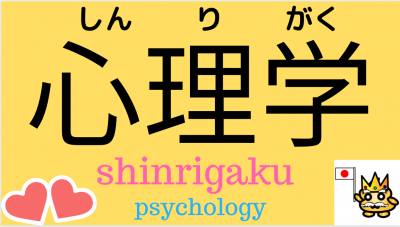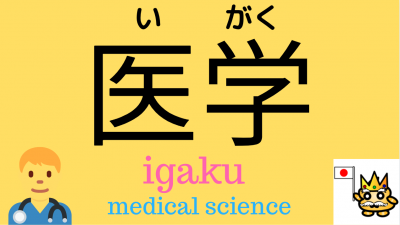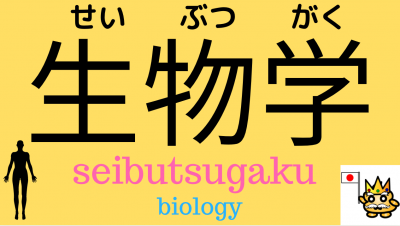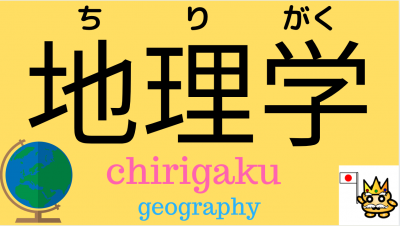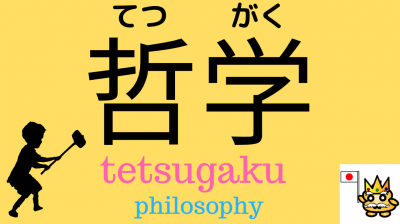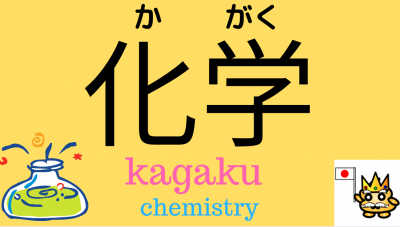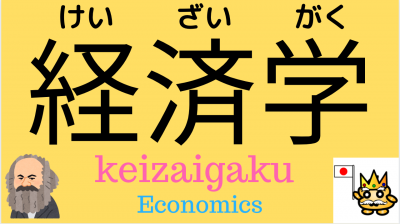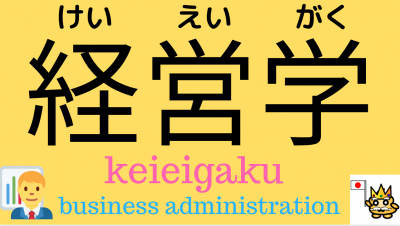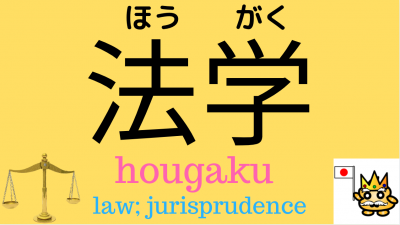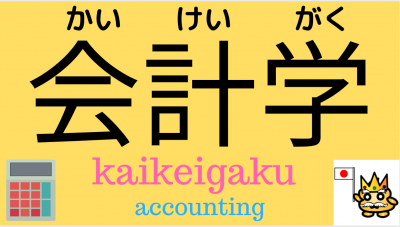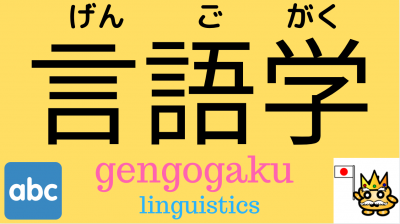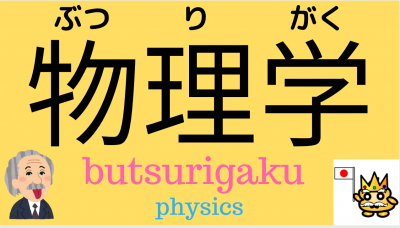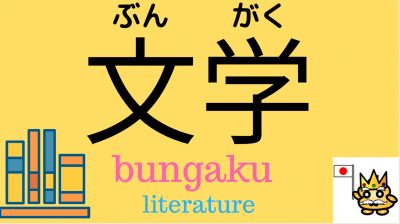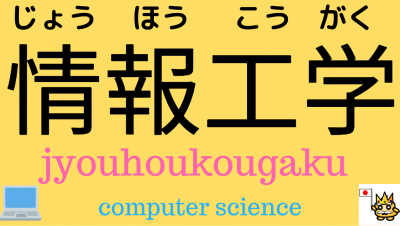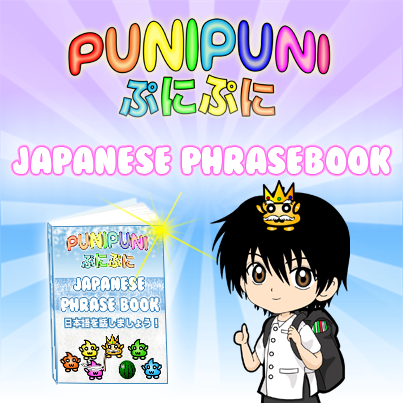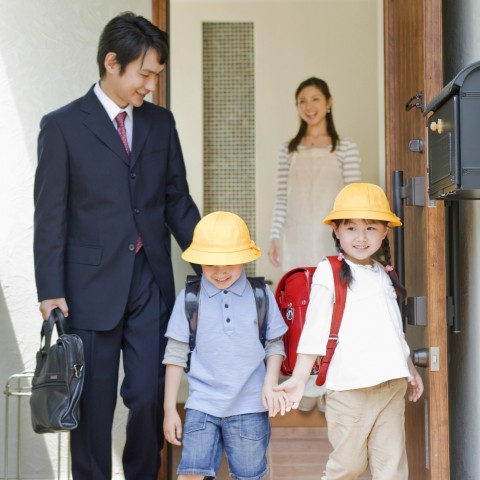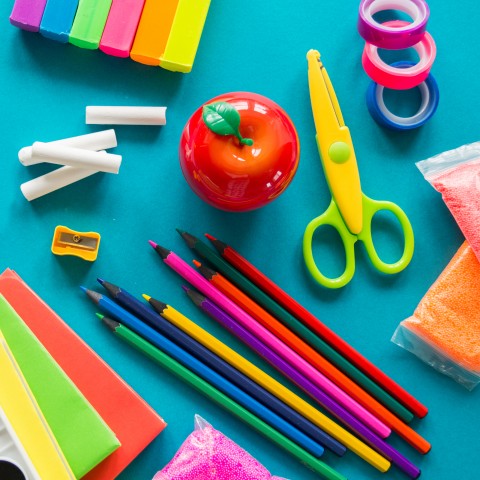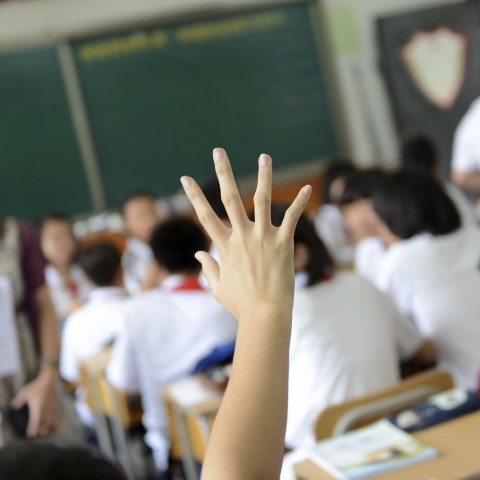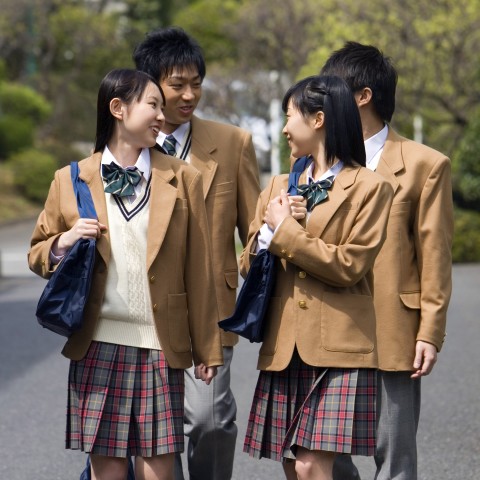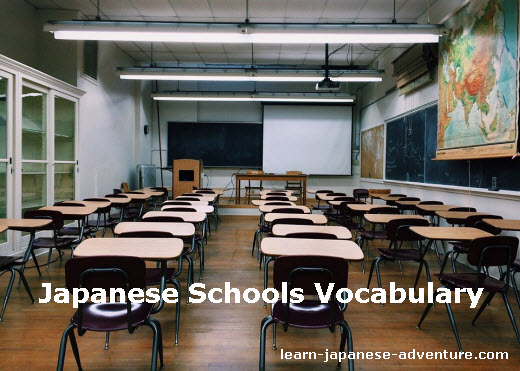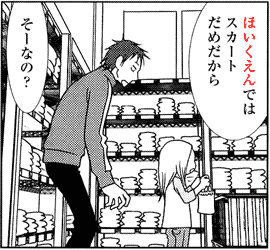This is a list of Japanese words related to school and educational institutions.
I’ve always enjoyed school and If you are staring to use these terms either for yourself, or for a loved one, I wish you the best luck! While I haven’t attended a school in Japan personally, I hear that they are much more difficult than American schools on average, especially for earlier grades.
- 学校 (gakkou): school
- 幼稚園 (youchien): kindergarten (also キンダー)
- 小学校 (shougakkou): elementary school
- 中学校 (chuugakkou): middle school
- 高校 (koukou): high school
- 大学 (daigaku): college or university
- 専門学校 (senmon gakkou): vocational or technical school
- 予備校 (yobikou): preparatory school (also 塾 ‘juku’)
- 授業 (jugyou): class
- 学生 (gakusei): student
- クラスメート (kurasumeeto): classmate
- 校内 (kounai): campus, school grounds
- 教室 (kyoushitsu): classroom
- 廊下 (rouka): hallway
- 先生 (sensei): teacher
- 担当 (tantou): person in charge (ex: 担当の先生: teacher in charge)
- 教職員 (kyoushokuin): faculty or staff of a school (also 教員)
- 校長先生 (kouchou sensei): principle
- 教頭先生 (kyoutou sensei): vice principle
- 休園 (kyuuen): (kindergarten) closed
- 休校 (kyuukou): school closed
- 〜年生 (~nensei): student at a certain grade in school [ex: 二年生 (ninensei): second grade student]
- 学年 (gakunen): grade in school (referring to 一年生、二年生, etc.)
- 代講 (daikou): substitute teacher
- アシスタント (ashisutanto): assistant (teacher)
- (に) 落ちる (ochiru): to fail (a test, etc)
- (に) 受かる (ukaru): to pass (a test, etc)
- (を) 受ける (ukeru): to take (a test, etc.)
- 合格 (goukaku): pass (a test, etc.)
- 不合格 (fugoukaku): fail (a test, etc.)
- 卒業する (sotsugyou suru): to graduate
- 卒業生 (sotsugyousei): graduate, alumnus
- 卒業アルバム (sotsuyou arubamu): yearbook
- 試験 (shiken): test (also テスト)
- 学期 (gakki): school term or semester
- 中間 (chuukan): mid-term (ex: 中間テスト)
- 期末 (kimatsu): end of term (ex: 期末テスト)
- 見学する (kengaku suru): to observe (a class, etc.)
- 飛び級する (tobikyuu suru): to skip a grade
- 教科書 (kyoukasho): text book
- 机 (tsukue): desk
- 黒板 (kokuban): blackboard
- 鉛筆 (enpitsu): pencil
- 実習 (jisshuu): ‘real’ practice (actually doing something)
- 自習 (jishuu): self-study (time given by teachers for students to study on their own, like before a test)
- お休み (oyasumi): a day off or holiday (for work or school)
- 休日(kyuujitsu): holiday (New Years, etc.)
- 下駄箱 (getabako): shoe cupboard / rack
- 単位 (tan’i): (college) credit
- 科目 (kamoku): subject / course
- 必修科目 (hisshuu kamoku): required course
- 退学する (taigaku suru): leaving / getting kicked out of school
- 入学する (nyuugaku suru): entering school
- 給食 (kyuushoku): school lunch
- 理系 (rikei): science track, or a student in such a program
- 文系 (bunkei): humanities track, or a student in such a program
- クラブ (kurabu): a club (tennis, etc.)
- 部活 (bukatsu): participation in a club (short for クラブ活動)
- 稽古 (keiko): practice session for a club, like Karate (also お稽古)
- 教育 (kyouiku): education
- 教育制度 (kyouiku seido): educational system (also 教育システム)
- 教育委員会 (kyouiku iinkai): board of education
- 補習校 (hoshuukou): supplementary school (often weekends only)
- 勉強する (benkyou suru): to study
- 学ぶ (manabu): to learn
- 専攻 (senkou): specialty/major
- 運動場 (undoujou): playground/schoolyard
- 体育館 (taiikukan): gymnasium
- 食堂 (shokudou): cafeteria (also カフェテリア)
- 不登校 (futoukou): not attending school
- 成績表 (seisekihyou): report card (that contains grades)
- 文科省 (monkashou): Ministry of Education, Culture, Sports, Science and Technology (MEXT) [short for 文部科学省]
- I was recently told this is something like a ‘board of education’ in the sense that it decides the educational standards for Japan, although this is just a subset of it’s duties. See more information here.
(Visited 14,040 times, 6 visits today)
がっこう — gakkou
学-scholarship; learning; knowledge (gaku), 校-school building (kou)
Japanese Definition
| school | |
| 1. 名詞. 学校。 | |
| I go to school every weekday. | |
| 平日は毎日学校 へ行きます。 | |
| 2. 名詞. (米国) 大学など高等教育機関。 | |
| 3. 名詞. (大学等における)学部。 | |
| School of Economics, School of Dance | |
| 4. 名詞. 学派。一派。 | |
| the monetarist school マネタリスト学派 | |
| 5. 動詞. (一般的に学校において)~を教育する。~を訓練する。 | |
| 6. 動詞. ~を叱る。~を懲戒する。 | |
| 7. 名詞. 魚のむれ。 | |
| a school of killifish | |
| メダカの群れ (「メダカの学校」としばしば誤訳されるが、本来は「群れ」と訳すのが正しい。) |
Translations for school and their definitions
| 群れ | |
| 1. n. group of animals such as a pack, flock, herd, bevy, school, etc. |
| 学校 | |
| 1. n. school (institution dedicated to teaching and learning) |
| 大学 | |
| 1. n. a university; a college |
| 大学院 | |
| 1. n. graduate school |
Pronunciation
(gakkou)
Dictionary
More Japanese words for School
All vocabulary sets
Random Quiz:
What is the word for light switch?
Start learning Japanese vocabulary
Japanese Vocabulary – School Subjects (学校の科目) – Review Notes
Today we learned how to say some school subjects in Japanese! In these review notes, we will go over all the Japanese vocabulary that was in the video and we will see a list of additional Japanese vocabulary!
………………………………………………………………………………..
Number 1:
★ The Japanese word for school subjects is 学校の科目 (gakkō no kamoku).
………………………………………………………………………………..
Number 2:
★ 数学 (sūgaku) is the Japanese word for math.
★ There is another Japanese word for math: 算数 (sansū) This word is used more for elementary school math or arithmetic, while 数学 (sūgaku) is used more for higher levels of math.
………………………………………………………………………………..
Number 3:
★ The Japanese word for science is 理科 (rika)
★ There is another word for science in Japanese: 科学 (kagaku).
★ Although they both translate as science in English, 理科 (rika) is used more in elementary schools and might be considered a more simple type of science.
★ From junior high school on, students study 科学 (kagaku) which includes more advanced kinds of science.
………………………………………………………………………………..
Number 4:
★ History in Japanese is 歴史 (rekishi).
………………………………………………………………………………..
Number 5:
★ The Japanese word for art is 美術 (bijutsu)
………………………………………………………………………………..
Number 6:
★ Japanese (language) in Japanese is 日本語 (nihongo).
★ In Japan, Japanese (as a school subject) is known as 国語 (kokugo – “national language”) rather than 日本語 (nihongo).
………………………………………………………………………………..
Additional School Subjects:
体育 taiiku P.E.
音楽 ongaku Music
社会 shakai Social Studies
社会学 shakaigaku Sociology
文学 bungaku Literature
英語 eigo English
スペイン語 supeingo Spanish
フランス語 furansugo French
ドイツ語 doitsugo German
言語学 gengogaku Linguistics
哲学 tetsugaku Philosophy
心理学 shinrigaku Psychology
人類学 jinruigaku Anthropology
地理学 chirigaku Geography
政治学 seijigaku Political Science
経済学 keizaigaku Economics
生物学 seibutsugaku Biology
化学 kagaku Chemistry
物理学 butsurigaku Physics
天文学 tenmongaku Astronomy
地質学 chishitsugaku Geology
医学 igaku Medical Science
統計学 tōkeigaku Statistics
……………………………………………………………………………….
Conclusion:
We learned a lot of school subjects in Japanese today! What’s your favorite school subject? Let us know in Japanese the comment section below!
Also, if you want to know a school subject’s name that we have not listed, feel free to ask!
……………………………………………………………………………….
Do you want a Japanese tutor?
Take Japanese Skype Lessons with Professional Japanese Teachers on kakehashijapan.com!
………………………………………………………………………………..
………………………………………………………………………………..
Doumo, riizhu^^)/ hallo, welcome to Japanese Learning Online, Let’s learn Japanese in pithy article here^^, as you see in the title, in this article, I’m sharing a vocabulary list all about school, words that you use frequently at school or when you are talking about school. Alright, let’s enjoy to memorize:
Japanese Vocabulary List: School (学校)
| Japanese | Romaji | English |
| 学校 | gakkou | school |
| 学生/生徒 | gakusei/seito | student |
| 教師 | kyoushi | teacher |
| 先生 | sensei | (used to call) teacher |
| 小学校 | shougakkou | elementary school |
| 小学生 | shougakusei | elementary school student |
| 中学校 | chuugakkou | junior high school |
| 中学生 | chuugakusei | junior high school student |
| 高校/高等学校 | koukou/koutougakkou | high school |
| 高学生 | kougakusei | high school student |
| 大学 | daigaku | university |
| 大学生 | daigakusei | college student |
| 幼稚園 | youchien | kindergarden |
| 校長 | kouchou | principal |
| 教徒 | kyouto | wakil kepala sekolah |
| 手帳 | techou | notebook |
| 鞄 | kaban | bag |
| 鉛筆 | enpitsu | pencil |
| ボルペン | borupen | bolpoint |
| 消しゴム | keshigomu | eraser |
| 定規 | jougi | ruler |
| 黒板 | kokuban | blackboard |
| 教室 | kyoushitsu | class |
| 宿題 | shukudai | homework |
| 塾 | juku | cram school |
| 制服 | seifuku | uniform |
| 学部 | gakubu | undergraduate |
| 試験 | shiken | test |
| 学友 | gakuyuu | school friend |
| 級友 | kyuuyuu | classmate |
| 図書館/図書室 | toshokan/toshoshitsu | library |
| 教授 | kyouju | professor |
| 学長 | gakuchou | university president |
| 転校生 | tenkousei | exchange student |
| 先輩 | senpai | senior student |
| 後輩 | kouhai | junior student |
| 一年生 | ichinensei | grade 1 student |
| 二年生 | ninensei | grade 2 student |
| 三年生 | sannensei | grade 3 student |
| 留学生 | ryuugakusei | foreign student |
| 会計学 | kaikeigaku | accounting |
| 代数学 | daisuugaku | algebra |
| 解剖学 | kaibougaku | anatomy |
| 人類学 | jinruigaku | anthropology |
| 考古学 | koukogaku | archeology |
| 建築学 | kenchikugaku | architecture |
| 美術 | bijutsu | art |
| 天文学 | tenmongaku | astronomy |
| 生物学 | seibutsugaku | biology |
| 植物学 | shokubutsugaku | botany |
| 科学 | kagaku | science |
| 経済 | keizai | economy |
| 外国語 | gaikokugo | foreign language |
| 地理 | chiri | geography |
| 言語学 | gengogaku | linguistics |
| 地質学 | chishitsugaku | geology |
| 幾何学 | kikagaku | geometry |
| 歴史 | rekishi | history |
| 法学 | hougaku | law |
| 文学 | bungaku | literature |
| 数学 | suugaku | math |
| 医学 | igaku | medical science |
| 哲学 | tetsugaku | philosophy |
| 物理学 | butsurigaku | physics |
| 生理学 | seirigaku | physiology |
| 化学 | kagaku | chemistry |
| 社会学 | shakaigaku | sociology |
| 動物学 | doubutsugaku | zoology |
| 卒業する | sotsugyou suru | graduate |
| 冬休み | fuyu yasumi | summer holiday |
| 夏休み | natsu yasumi | winter holiday |
| 机 | tsukue | desk |
| 椅子 | isu | chair |
Okey, that was the Japanese vocabulary list: school (学校), see you again next time learners, bye bye^^ jikai mo tanoshimi ni !(^o^)!.
If you are taking a Japanese group lesson online, or planning to study as a foreign student in Japan or to teach your language as a teacher in Japan, it’s good to know Japanese classroom phrases well for effective learning and better communication in the class.
In this guide, we introduce the most useful Japanese classroom phrases and vocabulary from various aspects, including school vocabulary, classroom greetings and calls, explaining absence and tardiness, teacher’s phrases, student phrases, and school subjects. You will learn not only common Japanese classroom phrases and vocabulary but also the unique features of Japanese schools, such as the school system, school routines, and school supplies. Let’s get ready for your class with JapanesePod101.com!
答えがわかったら手を挙げて Kotae ga wakattara te o agete
(“Raise your hand if you know the answer”)
Table of Contents
- School Vocabulary
- Classroom Greetings and Calls
- Explaining Absence and Tardiness/Leaving Early
- Teacher’s Phrases
- Student’s Phrases
- Talking About Subjects
- Conclusion
1. School Vocabulary
Before talking about Japanese classroom phrases, here are the lists of school vocabulary for the Japanese school system, school facilities, school personnel, school routines and school supplies.
1. Japanese School System
April is one of the most important months of the year in Japan as the school year or the fiscal year begins. Classes are held from Monday to Friday in compulsory education and at public schools, and some private schools are also open on Saturdays. The Japanese school year usually consists of three terms (学期 gakki), and there are short spring and winter breaks or a long summer break between each school term.
Below is the basic Japanese school system;
Elementary school: 6 years (age 7 to 12) [Compulsory Education]
Junior high school : 3 years (age 13 to 15) [Compulsory Education]
Senior high school : 3 years (age 16 to 18)
[Higher Education]
University: 4 years (6 years for Medicine, Pharmaceutical, Veterinary, and Dentistry School)
Junior college: 2 years (or 3, depending on the school)
Vocational school: 2 years (or 3, depending on the school)
Japanese Words for School Vocabulary
| English | Kanji | Hiragana | Reading |
| school | 学校 | がっこう | gakkō |
| elementary school | 小学校 | しょうがっこう | shōgakkō |
| junior high school | 中学校 | ちゅうがっこう | chūgakkō |
| senior high school | 高校 /高等学校 | こうこう / こうとうがっこう | kōkō (short version) / kōtō gakkō |
| university | 大学 | だいがく | daigaku |
| junior college | 短期大学 | たんき だいがく | tanki daigaku |
| vocational / technical school | 専門学校 | せんもん がっこう | senmon gakkō |
教室 kyōshitsu (“classroom”)
2. School Facilities
| English | Kanji | Hiragana | Reading |
| classroom | 教室 | きょうしつ | kyōshitsu |
| faculty room | 職員室 | しょくいんしつ | shokuinshitsu |
| science laboratory | 理科室 | りかしつ | rikashitsu |
| arts / craft room | 美術室 / 図工室 | びじゅつしつ / ずこうしつ | bijutsushitsu / zukōshitsu |
| library | 図書室 / 図書館 | としょしつ / としょかん | toshoshitsu / toshokan |
| gymnasium | 体育館 | たいいくかん | taiikukan |
| infirmary | 保健室 | ほけんしつ | hokenshitsu |
| schoolyard | 校庭 | こうてい | kōtei |
| athletic ground | 運動場 / 校庭 | うんどうじょう / こうてい | undōjō / kōtei |
| school cafeteria | 学生食堂/ 学食 | がくせい しょくどう/ がくしょく | gakusei shokudō/ gakushoku (short version) |
図書室 toshoshitsu (“library”)
3. School Personnel
| English | Kanji | Hiragana | Reading |
| student | 生徒 | せいと | seito |
| teacher | 先生 * | せんせい | sensei |
| professor | 教授 | きょうじゅ | kyōju |
| faculty | 教員 | きょういん | kyōin |
| vice principal | 教頭 / 副校長 | きょうとう / ふくこうちょう | kyōtō / fukukōchō |
| school principal | 校長 | こうちょう | kōchō |
| librarian | 司書 | ししょ | shisho |
| school caretaker | 用務員 | ようむいん | yōmuin |
*Generally, 先生 (sensei) is who teaches something, and 先生 (sensei) is commonly used for school teachers. On the other hand, a synonym word 教師 (kyōshi) is used as an occupation, for example, 私は教師です Watashi wa kyōshi desu. “I’m a teacher.”
4. School Routines
| English | Kanji/Katakana | Hiragana | Reading |
| going to school | 登校 | とうこう | tōkō |
| morning assembly | 朝礼 | ちょうれい | chōrei |
| class | 授業 | じゅぎょう | jugyō |
| examination | 試験 | しけん | shiken |
| food service * | 給食 | きゅうしょく | kyūshoku |
| break / recess | 休み時間 | やすみじかん | yasumi jikan |
| cleaning ** | 清掃 | せいそう | seisō |
| club activity | クラブ活動 | くらぶかつどう | kurabu katsudō |
| leaving school | 下校 | げこう | gekō |
*Food Service 給食 kyūshoku is usually provided at elementary school and middle high school for very low monthly fees in Japan. They usually eat kyūshoku in the classroom. In high school, students either bring their own lunch boxes お弁当 o-bentō or use the school cafeteria.
**There is time allocated for cleaning, especially from elementary to high school, and students clean their school by themselves in Japan. Not only in their home classroom but also in corridors, bathrooms, gym, and other places in the school. In this way, Japanese schools teach students to clean, keep tidy, be responsible, use things with care, etc.
5. School Supplies
| English | Kanji / Katakana | Hiragana | Reading |
| pencil | 鉛筆 | えんぴつ | enpitsu |
| mechanical pencil | シャーペン * | しゃーぺん | shāpen |
| pen | ペン | ぺん | pen |
| eraser | 消しゴム | けしごむ | keshigomu |
| pen case | 筆箱 | ふでばこ | fudebako |
| pencil sharpener | 鉛筆削り | えんぴつけずり | enpitsu kezuri |
| notebook | ノート | のーと | nōto |
| textbook | 教科書 | きょうかしょ | kyōkasho |
| book | 本 | ほん | hon |
| scissors | ハサミ | はさみ | hasami |
| glue | ノリ | のり | nori |
| ruler | 定規 | じょうぎ | jōgi |
| calculator | 計算機 | けいさんき | keisanki |
| school indoor shoes | 上履き ** | うわばき | uwabaki |
| school backpack (elementary school) | ランドセル *** | らんどせる | randoseru |
* シャーペン shāpen (“mechanical pencil”) is 和製英語 Wasei-eigo (“Japanese-made English”) word that is the shorter version of シャープペンシル “sharp pencil.”
** Wearing 上履き uwabaki (“school indoor shoes”) at school is something particular about Japan. This comes from the Japanese culture and etiquette that people are expected to remove their shoes when entering homes and other particular rooms or buildings.
*** ランドセル randoseru (“school backpack for elementary school kids”) is a unique Japanese school backpack usually made of leather with a firm structure. Traditionally, parents or grandparents give children as a gift upon entering elementary school. They use the same randoseru for 6 years until they graduate from elementary school.
To enhance your Japanese vocabulary and learn more about Japanese basic nouns, please check out Guide to the Top 100+ Japanese Nouns.
ランドセルは日本の小学校のかばんです。
Randoseru wa Nihon no shōgakkō no kaban desu.
(“Randoseru is a bag for elementary school in Japan” )
6. Example Sentences
タメ口 Tameguchi (“peer language”) or casual speech form can be used when talking among students. However, 敬語 keigo (“honorific speech”) or polite language should be used for teachers.
Here are some basic phrases in Japanese classrooms using school vocabulary:
[Japanese] 鉛筆を1本借りてもいい? Enpitsu o ippon karite mo ii? (casual)
[English] “May I borrow a (one) pencil? ”
*Japanese language learning: To learn more about Japanese numbers, see Japanese Numbers: Let’s Master the Basic Japanese Numbers!
[Japanese] 生物の教科書を失くしちゃった。 (casual)
Seibutsu no kyōkasho o nakushichatta.
[English] “I lost my biology textbook.”
[Japanese] 宿題を忘れました。 (polite)
Shukudai o wasuremashita.
[English] “I forgot my homework.”
[Japanese] 消しゴム持ってる? Keshigomu motte ru? (casual)
[English] “Do you have an eraser?”
[Japanese] これ使っていいよ。 Kore tsukatte ii yo. (casual)
[English] “Here, you can use this.”
[Japanese] ありがとう、後で返すね。 Arigatō, ato de kaesu ne. (casual)
[English] “Thanks, I will return it to you later.”
[Japanese] 明日の朝は体育館で全校朝礼があります。 (polite)
Ashita no asa wa taiikukan de zenkō chōrei ga arimasu.
[English] “We will have a whole school assembly at the gymnasium tomorrow morning. ”
[Japanese] 明日の化学の試験は何時だっけ? (casual)
Ashita no kagaku no shiken wa nan-ji dakke?
[English] “What time is the chemistry test tomorrow?”
*Please visit How to Tell Time in Japanese article and Japanese Calendar Dates: Reading Dates in Japanese & More on JapanesePod101 to learn how to tell time and date in Japanese.
消しゴム持ってる? Keshigomu motte ru? (“Do you have an eraser?”)
2. Classroom Greetings and Calls
Some of the most essential Japanese classroom phrases are greetings and calls used at school.
Here is the list of frequently used Japanese words and greetings in classrooms.
[Japanese] 先生 / 教授、おはようございます。 Sensei / kyōju, ohayō gozaimasu. (polite)
[English] “Good morning teacher / professor.”
*Japanese language learning: To learn more Japanese greetings, check out How to Say Hello in Japanese: Practical Japanese Greetings.
[Japanese] おはよう。 Ohayō. (casual)
[English] “Good morning.”
[Japanese] バイバイ。 Bai bai. (casual)
[English] “Bye bye.”
[Japanese] また明日。 Mata ashita. (casual)
[English] “See you tomorrow.”
[Japanese] 先生、さようなら。 Sensei, sayōnara. (polite)
[English] “Good bye, teacher.”
[Japanese] 起立! 気をつけ! 礼! 着席! (imperative)
Kiritsu ! Ki o tsuke ! Rei ! Chakuseki !
[English] “Stand up! Attention (make a good posture)! Bow! Seated down! ”
*This is the traditional call and ritual of bowing in Japan at the start and end of school class to greet the teacher. Usually, one of the students in a class is allocated to the call roll on a weekly or monthly basis.
When there is a whole school or classroom assembly, usually held in the gymnasium or schoolyard, the following phrases are used.
[Japanese] 集合! Shūgō! (imperative)
[English] “Assemble / gather!”
[Japanese] 一列に並べ。 Ichi-retsu ni narabe. (imperative)
[English] “Line up in a row.”
[Japanese] 前へならえ。 Mae e narae. (imperative)
[English] “Stand at arm’s length. (Literally: follow (do) as front)”
[Japanese] 解散! Kaisan ! (imperative)
[English] “Dismissed!”
3. Explaining Absence and Tardiness/Leaving Early
1. Taking Attendance
At Japanese Schools, usually from elementary school to high school, students have a “home class” and a particular teacher (担任 tannin) who’s in charge of its home class. Students usually stay in the home classroom and 担任 (tannin) teaches all the basic subjects in elementary school, and teachers of each subject come to the classroom to give classes in junior highschool and senior highschool.
The teacher in charge of a home-class calls the roll in the morning meeting.
Japanese Vocabulary for Taking Attendance
| English | Kanji | Hiragana | Reading |
| take attendancecall the roll | 出欠を取る | しゅっけつをとる | shukketsu o toru |
| present | 出席 | しゅっせき | shusseki |
| absent | 欠席 | けっせき | kesseki |
| tardiness / late | 遅刻 | ちこく | chikoku |
| leave early | 早退 | そうたい | sōtai |
2. Teacher
Following are some teacher’s basic phrases in Japanese for taking attendance:
[Japanese] 静かに。出欠を取ります。 Shizuka ni. Shukketsu o torimasu.
[English] “Quiet please, I will take attendance now.”
[Japanese] 名前を呼ばれたら返事をすること。 Namae o yobaretara henji o suru koto.
[English] “Respond when your name is called.”
[Japanese] 全員いますか。 Zen’in imasu ka.
[English] “Is everyone here?”
[Japanese] 誰か欠席の人いますか。 Dare ka kesseki no hito imasu ka.
[English] “Anybody absent?”
[Japanese] [name]さんが今日欠席した理由を知っている人はいますか。
[name]-san ga kyō kesseki shita riyū o shitte iru hito wa imasu ka.
[English] “Does anyone know why [name] is absent today?”
はい、います。 Hai, imasu. (“Yes, I’m present”)
3. Student
Following are some student’s basic phrases in Japanese for taking attendance:
[Japanese] はい、います。 Hai, imasu.
[English] “Yes, I’m present.” (response when your name is called)
[Japanese] [name] さんがいません。[name]-san ga imasen.
[English] “[name] is not here.”
[Japanese] すみません、寝坊したので遅刻しました。
Sumimasen, nebō shita node chikoku shimashita.
[English] “I’m sorry, I was late because I overslept.”
[Japanese] 電車が人身事故で止まったので遅刻しました。
Densha ga jinshin jiko de tomatta node chikoku shimashita.
[English] “I was late because the train stopped due to an injury accident.”
[Japanese] [name]さんは昨日から体調が悪くて、今日は欠席です。
[name]-san wa kinō kara taichō ga warukute, kyō wa kesseki desu.
[English] “[name] has been sick since yesterday and is absent today.”
[Japanese] 足を骨折したので、体育の授業は見学します。
Ashi o kossetsu shita node, taiiku no jugyō wa kengaku shimasu.
[English] “I will just observe the PE class because I broke my leg.”
[Japanese] すみません、とても気分が悪いので早退します。
Sumimasen, totemo kibun ga warui node sōtai shimasu.
[English] “Excuse me, I’m leaving early because I feel very sick.”
4. Teacher’s Phrases
In the Japanese culture, names are called together with 敬称 keishō (“Japanese honorific title”), “さん san” is most commonly used.
When a teacher talks to a student : [student family name] + さん san
In some cases, [family name of a male student] + 君 くん kun
The following are frequently used Japanese classroom phrases by teachers in a class.
1. Instructions
[Japanese] みんな、席に着いて。 Minna, seki ni tsuite.
[English] “Everyone, be seated.”
[Japanese] [name] 君、早く座りなさい。 [name]-kun, hayaku suwarinasai.
[English] “[name], sit down now.”
[Japanese] では、始めます。 Dewa, hajimemasu.
[English] “Well, let’s begin.”
[Japanese] 今日はXXXについて勉強します。 Kyō wa XXX ni tsuite benkyō shimasu.
[English] “We are going to learn XXX today.”
[Japanese] 教科書のXXページを開いてください。 Kyōkasho no XX-pēji o hiraite kudasai.
[English] “Please open to page XX of your textbook.”
[Japanese] これはとても重要です。 Kore wa totemo jūyō desu.
[English] “This is very important.”
[Japanese] これはテストに出るので、しっかり理解してください。
Kore wa tesuto ni deru node, shikkari rikai shite kudasai.
[English] “Please understand this well because this will be on the test.”
[Japanese] しっかり聞いてください。 Shikkari kiite kudasai.
[English] “Listen carefully.”
[Japanese] 黒板の図を見てください。 Kokuban no zu o mite kudasai.
[English] “Look at the diagram on the blackboard.”
[Japanese] この質問の答えがわかる人は手をあげてください。
Kono shitsumon no kotae ga wakaru hito wa te o agete kudasai.
[English] “Raise your hand if you know the answer to this question.”
[Japanese] 最初に聞いてから、私の後で繰り返してください。
Saisho ni kiite kara, watashi no ato de kurikaeshite kudasai.
[English] “Listen first and repeat after me.”
[Japanese] 答えをノートに書いて。 Kotae o nōto ni kaite.
[English] “Write the answers in your notebook.”
[Japanese] みんなで一緒に、2段落目から読みましょう。
Minna de issho ni, ni-danraku-me kara yomimashō.
[English] “Let’s read from the second paragraph together.”
[Japanese] [name]さん、XXページを読んでください。
[name]-san, XX-pēji o yonde kudasai.
[English] “[student name], read the page XX please.”
[Japanese] 紙を一枚ずつ取って、後ろの人に渡してください。
Kami o ichi-mai zutsu totte, ushiro no hito ni watashite kudasai.
[English] “Take one sheet of paper and pass (the rest) to the person behind you.”
これはとても重要です。 Kore wa totemo jūyō desu. ( “This is very important.”)
2. Homework
[Japanese] 今日の宿題はXXXです。 Kyō no shukudai wa XXX desu.
[English] “Homework for today is XXX.”
[Japanese] 宿題は教科書XXページの1番から5番です。
Shukudai wa kyōkasho XX-pēji no ichi-ban kara go-ban desu.
[English] “The homework is from the number 1 to 5 on page XX of the textbook.”
[Japanese] 今日学んだことを家で復習してください。
Kyō mananda koto o ie de fukushū shite kudasai.
[English] “Review at home what you’ve learned today.”
[Japanese] 前回出された宿題は、先生の机の上に提出してください。
Zenkai dasareta shukudai wa, sensei no tsukue no ue ni teishutsu shite kudasai.
[English] “Please submit the homework given last time on the teacher’s desk.”
[Japanese] 宿題の提出は成績に反映されます。
Shukudai no teishutsu wa seiseki ni han’ei saremasu.
[English] “Your homework submission will be reflected in your grades.”
3. Questions
[Japanese] 質問はありますか。 Shitsumon wa arimasu ka.
[English] “Any questions?”
[Japanese] 皆さん分かりましたか。 Mina-san wakarimashita ka.
[English] “Did everyone understand this?”
[Japanese] 誰かこの問題を解答できますか。 Dare ka kono mondai o kaitō dekimasu ka.
[English] “Can anyone solve this problem?”
[Japanese] 正しい答えは何ですか。 Tadashii kotae wa nan desu ka.
[English] “What is the correct answer?”
[Japanese] ここまでで何か分からないことはありますか。
Koko made de nani ka wakaranai koto wa arimasu ka.
[English] “Is there anything you don’t understand so far?”
正しい答えは何ですか。 Tadashii kotae wa nan desu ka. ( “What is the correct answer?”)
4. Keeping the Order
[Japanese] 静かにしなさい。Shizuka ni shinasai.
[English] “Be quiet.”
[Japanese] おしゃべりはやめなさい。 Oshaberi wa yamenasai.
[English] “Stop talking!”
[Japanese] 自分の席に戻りなさい。 Jibun no seki ni modorinasai.
[English] “Go back to your seat!”
[Japanese] 授業に集中しなさい。 Jugyō ni shūchū shinasai.
[English] “Focus on the class!”
[Japanese] 質問がある時は手をあげてください。 Shitsumon ga aru toki wa te o agete kudasai.
[English] “Raise your hand if you have a question.”
Japanese language learning : To learn more Japanese angry phrases, please also check out Getting Angry in Japanese: 20+ Useful Japanese Angry Phrases.
5. Student’s Phrases
At schools in Japan, faculty is usually called by his/her title by students.
When students talk to a teacher: 先生 sensei (“Mr./ Mrs.“, Literally: teacher)
When students talk to a professor: 教授 kyōju (Literally: professor)
If you want to be more specific, add a name in front of a title, such as 高橋先生 Takahashi-sensei (Mr./ Mrs.Takahashi, Literally: Takahashi teacher).
Here is the list of most useful Japanese classroom phrases used by students, including when asking questions to a teacher and when talking with other students.
1. Asking Questions
[Japanese] すみません、何ページですか。 Sumimasen, nan-pēji desu ka.
[English] “Excuse me, what page are we on?”
[Japanese] わかりません。Wakarimasen.
[English] “I don’t understand.”
[Japanese] 過去分詞の使い方がわかりません。Kakobunshi no tsukaikata ga wakarimasen.
[English] “I don’t understand how to use a past participle.”
[Japanese] その部分をもう一度言ってください。 Sono bubun o mō ichi-do itte kudasai.
[English] “Please repeat that part again.”
[Japanese] もう一度ゆっくり言ってもらえますか。 Mō ichi-do yukkuri itte moraemasu ka.
[English] “Can you say that again slowly?”
[Japanese] もっとわかりやすく説明してください。Motto wakariyasuku setsumei shite kudasai.
[English] “Please explain it in a more understandable way.”
[Japanese] 質問があります。Shitsumon ga arimasu.
[English] “I have a question.”
[Japanese] 質問してもいいですか。 Shitsumon shite mo ii desu ka.
[English] “Can I ask you a question?”
[Japanese] 先生は今何て言いましたか。 Sensei wa ima nante iimashita ka.
[English] “What did the teacher just say?”
[Japanese] これは何て発音しますか。 Kore wa nante hatsuon shimasu ka.
[English] “How do you pronounce this?”
[Japanese] XXXはどういう意味ですか。 XXX wa dō iu imi desu ka.
[English] “What does XXX mean?”
[Japanese] どうしてこの場合に未来完了形を使うのですか。
Dōshite kono bāi ni mirai kanryōkei o tsukau no desu ka.
[English] “Why do you use the future perfect tense in this case?”
[Japanese] これは合ってますか。 Kore wa atte masu ka.
[English] “Is this correct ?”
[Japanese] これが正解ですか。 Kore ga seikai desu ka.
[English] “Is this the correct answer?”
[Japanese] やっと理解しました。Yatto rikai shimashita.
[English] “I finally understood.”
[Japanese] トイレに行ってもいいですか。 Toire ni itte mo ii desu ka.
[English] “May I go to the bathroom?”
[Japanese] 気分が悪いので、保健室に行ってもいいですか。
Kibun ga warui node, hokenshitsu ni itte mo ii desu ka.
[English] “May I go to the infirmary because I feel sick?”
質問があります。Shitsumon ga arimasu. (“I have a question.”)
2. Talking Among Students
The speech tone is very casual for conversations among students. The following are handy Japanese classroom phrases when you want to chat with your friends in a class.
[Japanese] 今どこ? Ima doko?
[English] “Where are we at?”
[Japanese] 今何ページ? Ima nan-pēji?
[English] “Which page are we on?”
[Japanese] 宿題やった? Shukudai yatta?
[English] “Did you do your homework?”
[Japanese] 宿題やったのに、家に忘れてきちゃった。Shukudai yatta noni, ie ni wasurete kichatta.
[English] “Though I did my homework, I forgot it at home.”
[Japanese] 後でノート見せてもらってもいい? Ato de nōto misete moratte mo ii?
[English] “Can I see your notebook later?”
[Japanese] 今日の授業は全然わからなかった。Kyō no jugyō wa zenzen wakaranakatta.
[English] “I didn’t understand today’s class at all.”
[Japanese] この問題が分からないんだけど、教えて。 Kono mondai ga wakaranai n da kedo, oshiete.
[English] “I don’t understand this problem, can you teach me?”
[Japanese] 宿題は何だっけ? Shukudai wa nan dakke?
[English] “What is the homework?”
[Japanese] 教科書の何ページが試験範囲? Kyōkasho no nan-pēji ga shiken han’i?
[English] “Which pages of the textbook will be covered in the exam?”
[Japanese] 英語のテストはいつだっけ? Eigo no tesuto wa itsu dakke?
[English] “When is the English exam?”
[Japanese] 試験の勉強は全然できてない。 Shiken no benkyō wa zenzen dekite nai.
[English] “I couldn’t study enough for exams at all.”
[Japanese] テスト/試験 どうだった? Tesuto / shiken dō datta?
[English] “How was your test / exams?”
[Japanese] どうしよう、英語のテストが赤点*だった。Dō shiyō, Eigo no tesuto ga akaten* datta.
[English] “What should I do, I got a red mark on the English test.”
*赤点 akaten is a slang word for bad grades, it is literally translated as “red mark”, meaning “failing grades”.
[Japanese] 試験の結果は思ったより良かったよ。Shiken no kekka wa omotta yori yokatta yo.
[English] “The result of the exam was better than I thought.”
[Japanese] 試験期間が終わったら、カラオケに行こう! Shiken kikan ga owattara, karaoke ni ikō!
[English] “When the exam period is over, let’s go to Karaoke!”
テストどうだった? Tesuto dō datta? (“How was your test?”)
6. Talking About Subjects
1. Subject Vocabulary [From Elementary To High School]
School subjects are one of the most essential parts when learning classroom phrases and vocabulary.
The following is the list of subjects (科目 kamoku) that are taught from elementary school to high school in Japan.
| English | Kanji | Hiragana | Reading |
| arithmetic(elementary school) | 算数 | さんすう | sansū |
| mathematics | 数学 | すうがく | sūgaku |
| science (elementary and middle highschool) | 理科 | りか | rika |
| physics | 物理 | ぶつり | butsuri |
| chemistry | 化学 | かがく | kagaku |
| biology | 生物 | せいぶつ | seibutsu |
| geography | 地理 | ちり | chiri |
| Japanese(national language) | 国語 | こくご | kokugo |
| modern literature | 現代文 | げんだいぶん | gendaibun |
| classical literature | 古文 | こぶん | kobun |
| English | 英語 | えいご | Eigo |
| social science | 社会 | しゃかい | shakai |
| politics and economics | 政治経済 | せいじけいざい | seiji keizai |
| Japanese History | 日本史 | にほんし | Nihonshi |
| world history | 世界史 | せかいし | sekaishi |
| art and craft(elementary school) | 図工 | ずこう | zukō |
| art | 美術 | びじゅつ | bijutsu |
| physical education | 体育 | たいいく | taiiku |
| home economics | 家庭科 | かていか | kateika |
| music | 音楽 | おんがく | ongaku |
学科 gakka / 科目 kamoku (“School subjects”)
2. Subject Vocabulary [University]
Below are the common department / course of study (学科 gakka) taught in higher education, such as junior college or university.
| English | Kanji / Katakana | Hiragana | Reading |
| Psychology | 心理学 | しんりがく | shinrigaku |
| Law | 法学 | ほうがく | hōgaku |
| Literature | 文学 | ぶんがく | bungaku |
| Business Management | 経営学 | けいえいがく | keieigaku |
| Statistics | 統計学 | とうけいがく | tōkeigaku |
| Accounting | 会計学 | かいけいがく | kaikeigaku |
| Information Technology | 情報技術 | じょうほうぎじゅつ | jōhō gijutsu |
| International Relations | 国際関係 | こくさいかんけい | kokusai kankei |
| Education | 教育学 | きょういくがく | kyōikugaku |
| Medicine | 医学 | いがく | igaku |
| Pharmaceutics | 薬学 | やくがく | yakugaku |
| Nursing | 看護学 | かんごがく | kangogaku |
| Architecture | 建築学 | けんちくがく | kenchikugaku |
| Agriculture | 農学 | のうがく | nōgaku |
| Foreign language | 外国語 | がいこくご | gaikokugo |
| French | フランス語 | ふらんすご | Furansu-go |
| German | ドイツ語 | どいつご | Doitsu-go |
| Spanish | スペイン語 | すぺいんご | Supein-go |
| Russian | ロシア語 | ろしあご | Roshia-go |
| Chinese | 中国語 | ちゅうごくご | Chūgoku-go |
| Korean | 韓国語 | かんこくご | Kankoku-go |
3. Example Sentences
Here are some basic phrases in Japanese using subject vocabulary:
[Japanese] 私の一番好きな科目は [subject] です。
Watashi no ichi-ban suki na kamoku wa [subject] desu.
[English] “My favorite subject is [subject].”
[Japanese] 私は [subject] が得意です。Watashi wa [subject] ga tokui desu.
[English] “I’m good at [subject].”
[Japanese] 私は [subject] が苦手です。Watashi wa [subject] ga nigate desu.
[English] “I’m not good at [subject].”
[Japanese] [subject] は難しいので嫌いです。 [subject] wa muzukashii node kirai desu.
[English] “I don’t like [subject] because it’s difficult.”
[Japanese] 何の科目が一番好きですか。 Nan no kamoku ga ichi-ban suki desu ka.
[English] “What is your favorite subject?”
[Japanese] 何の科目が得意ですか。 Nan no kamoku ga tokui desu ka.
[English] “Which subjects are you good at?”
[Japanese] 大学では [subject] を学びたいです。 Daigaku de wa [subject] o manabitai desu.
[English] “I’d like to learn [subject] at university.”
[Japanese] 専攻学科は何ですか。Senkō gakka wa nan desu ka.
[English] “What is your major?”
[Japanese] 私の専攻学科は [subject] です。 Watashi no senkō gakka wa [subject] desu.
[English] “My major is [subject].”
[Japanese] 第二外国語としてドイツ語のクラスをとっています。
Dai-ni gaikokugo toshite Doitsu-go no kurasu o totte imasu.
[English] “I’m taking German class as a second foreign language.”
Japanese language learning : If you want to learn more about how to introduce yourself in Japanese, please see How to Say “My Name is,” in Japanese + More!
7. Conclusion
In this article, we introduced 100+ most useful Japanese Classroom Phrases and Vocabulary, including:
- School vocabulary and the Japanese school system
- Useful Classroom Greetings and Calls
- Explaining Absence and Tardiness/Leaving Early
- Teacher’s Phrases
- Student’s Phrases
- Talking about Subjects
Whether you are taking a Japanese class or you want to teach at a Japanese local school and/or study with native students, our guide of Japanese Classroom Phrases and Vocabulary will make your school life easier and more adaptable.
If you would like to learn more about the Japanese language, you’ll find a lot more helpful content on JapanesePod101.com. This is the best place to learn Japanese online, providing a variety of free lessons designed to help you improve your Japanese-language skills.
If you are interested in more Japanese phrases sorted by situations, the following articles are just right for you:
- Japanese Travel Phrases for an Enjoyable Trip to Japan
- 50+ Restaurants Phrases for Eating Out in Japan
- Essential Business Japanese: Learn the Most Useful Phrases
And there’s so much more! Be a faster learner and enjoy studying Japanese at JapanesePod101.com!
Before you go, let us know in the comments if there are any specific topics or situations you’d like to learn Japanese phrases for. We’d be glad to help, and we look forward to hearing from you!

This list is geared towards new JET(s) with little or no Japanese ability. If you print this and keep it at your desk or in your English classroom, it could save you a lot of stress and confusion! Printable version is at the bottom of this page.
Note to future editors: Please do not edit the list if you plan on overcomplicating it with difficult vocabulary! This is a survival guide, not a dictionary.
Places
- Shokuinshitsu: Teacher’s Room
- Gakkou: School
- Chugakkou: Junior High School
- Shougakkou: Elementary School
- Budoujou: Training Hall
- Taiikukan: School Gym
- Guraundo: School Grounds
- Toshokan: Library
- Kyoushitsu: Classroom
Teaching/Grades
- Juugyou: Class/lesson
- Sensei/Kyoushi: Teacher
- Soumu: Head Teacher (grade)
- Tantou: Head Teahcer (subject)
- Gakusei: Student
- Nensei: Grade
- Ichinensei 1年生: First Grade
- Ninensei 2年生: Second Grade
- Sannensei 3年生: Third Grade
- Ichi: 1
- Ni: 2
- San: 3
- Yon/Shi: 4
- Go: 5
- Roku: 6
- Ni Jikanme: 2nd Period
- Souji: Cleaning Time
- Hiruyasumi: Lunch Break
Subjects
- Nihongo: Japanese
- Eigo: English
- Kagaku: Science
- Bijutsu: Art
- Taiiku: PE
- Rekishi: History
- Ongaku: Music
Classroom Vocabulary
- Shiken: Test/Exam
- Shukudai: Homework
- Renshuu: Practice
- Renshuu Mondai: Exercises
- Nôto: Notebook
- Kyoukasho: Textbook
- Shiken: Test/Exam
- Jisho: Ditionary
- Pasokon: Laptop
- Tsukue: Desk
- Isu: Chair
- Enpitsu: Pencil
- Pen: Pen
Time/Date
- Kyou: Today
- Ashita: Tomorrow
- Kinou: Yesterday
- Getsuyoubi 月: Monday
- Kayoubi 代: Tuesday
- Suiyoubi 水: Wednesday
- Mokuyoubi 木: Thursday
- Kinyoubi 金: Friday
- Doyoubi 土: Saturday
- Nichiyoubi 日: Sunday
- Ato De: Later
- Ima: Now
- Tsugi: Next
- Tsugi no juugyou: Next lesson
- Itsu desu ka: When?
- Doko desu ka: Where?
School Events
- Nyuugaku Shiki: Entrance Ceremony
- Sotsugyou Shiki: Graduation
- Bunkasai: Cultural Festival
- Undoukai: Sports Day
- Shuugaku Ryokou: School Trip
Miscellaneous
- Shucchou: Work Leave
- Nenkyuu: Paid Leave
- Byoukyuu: Sick Leave
- Bukatsu: School Club
- Nichiban: Student Leader in a class
- Kudasai: Please
- Onegai Shimasu: Please
EXPRESSIONS AND PHRASES
- Ohayo gozaimasu! : Good morning! (Say this every day when you walk into the shokuinshitsu)
- Hajimemashite: How do you do? (Literally «I am meeting you for the first time»)
- Yoroshiku onegai shimasu: I am pleased to meet you. (Literally «Please make good relations with me» or «Please be kind to me».)
- Kochira koso: My pleasure / Likewise
- Watashi wa ________desu. : I am _____________.
- (Country) kara kimashita: I came from (Country)
- Konnichiwa: Hello! (say when you are passing teachers in the hall)
- Sumimasen: Excuse me / Sorry
- Gomen nasai: Sorry (more apologetic)
- Shitsurei shimasu: Excuse me (more formal)
- Osakini Shitsureishimasu: Excuse me for leaving before you (Say this every day when you leave school at 4:15!)
- Genki desu ka?: How are you? / Are you well?
- Shuumatsu wa dou deshita ka?: How was your weekend?
- Ii tenki desu ne: Nice weather, isn’t it?
- Itsu desu ka?: When is it?
- Doko desu ka?: Where is it?
- ~~ Chuugakkou de Eigo no kyoushi desu: I am an English teacher at ~~JHS.
- Arigatou gozaimasu: Thank you
- Dou itashimashite: You are welcome / Don’t mention it / Not at all
- Omedetou gozaimasu: Congratulations!
- Daijoubu desu ka: Are you OK?
- Douzo: Go ahead / Here you go
- Itadakimasu: You say this to express your gratitude before meals (Elementary school lunch)
- Gochisou sama deshita: You say this to express your gratitude after meals (Elementary school lunch)
- Itterasshai: Take care / Have a nice day / Have a nice time
- Ki o tsukete: Be careful
- Odaiji ni: Take care of your body (say this to a friend who is sick)
- Yonde kudasai: Please read it
- Kaite kudasai: Please write it
- Kiite kudasai: Please listen
- Kurikaeshite kudasai / Repeato kudaisai: Please repeat
- Mou ichido itte kudasai: Please say it again
- Shitsumon wa arimasen ka: Do you have any questions?
- Isoide kudasai: Please hurry up
- Wakarimashita ka: Did you understand?
- Wakarimasen: I don’t understand
- Shitteimasu ka: Do you know it/them?
- Ganbatte kudasai: Please do your best!
Click below for printable version:
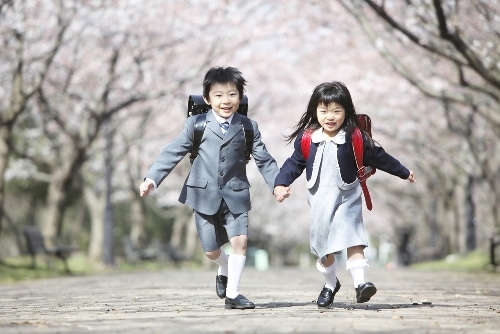
By
Last updated:
April 27, 2022
60 Advanced Japanese Vocabulary Words for Anyone Teaching or Studying at Japanese Schools
If you intend to spend any time in a Japanese school, as a friend, visitor, cultural exchange student or teacher, there’s a lot more advanced Japanese vocabulary you’ll need to navigate the campus.
Some of these will appear on the Japanese Language Proficiency Test and your JLPT books, but you need context in order to understand them.
Let’s first get some perspective before we dive into the full list of vocabulary that you’ll need…
Contents
- A Day at School – 学校での一日 (がっこうでの いちにち)
- Japanese Vocabulary for School Staff – 職員 (しょくいん)
- Japanese Vocabulary for Events – 行事 (ぎょうじ)
- Classes and Clubs
- School Objects – 学用品 (がくようひん)
- Daily Life – 日常生活 (にちじょう せいかつ)
- Miscellaneous – その他 (そのた)
Download:
This blog post is available as a convenient and portable PDF that you
can take anywhere.
Click here to get a copy. (Download)
A Day at School – 学校での一日 (がっこうでの いちにち)
Meet Motohiro Fujimura. He’s a second grade student in junior high school (the equivalent of American 8th grade) at a small school in Takamatsu, Kagawa, Japan.
Every morning, he wakes up at 6:00 in the morning, eats a breakfast of toast, cereal and scrambled eggs, puts on his uniform (制服, せいふく), grabs his duffel bag and helmet, and rides his bike to school. At 7:00 he has his club activity (部活動, ぶかつ), soccer/football, on the field.
After a grueling half hour of drills, he changes out of his gym clothes and back into his uniform, takes off his outdoor shoes (運動靴, うんどうぐつ), puts on his indoor shoes (上靴, うわぐつ), greets his homeroom teacher (担任, たんにん) and her assistant (副担任, ふくたんにん), puts his belongings into a cubby/locker and sits down to read a book.
His grade level doesn’t have a morning meeting (朝礼, ちょうれい) today, so they immediately get started on homeroom activities. He did his homework for Japanese (国語, こくご) and Industrial Arts (技術, ぎじゅつ) but left his math notebook at school.
Oh no! He’ll turn in that homework tomorrow.
At 11:50, the students clean up the room and put on their aprons, cook’s hats and face masks to get ready for school lunch (給食, きゅうしょく). Excited for a break, the students race each other to the lunch room to grab the metal containers of food. Skidding down the hallways, they sprint back to the classroom, where they start dividing out equal portions of udon, curry, seaweed salad and deep-fried bread (why are they having wheat noodles and deep-fried wheat bread in one meal?! Because they’re growing children and need a lot of carbs, perhaps.)
The lunch leader greets the students, “We humbly receive this meal. Eat up!“ (いただきます!). When it’s time to clean up the greeter says the closing words, “Put your hands together and look at me. Thank you for the meal!” (ごちそうさまでした!).
Finally, recess time (昼休み, ひるやすみ). The students find ways to release steam and entertain themselves on campus. When recess ends, they file back into their homerooms for the last two classes of the day. Motohiro’s class has physical education today, so they all change in the classroom and jog out to the field for track day. When the bell rings, they return for science class, but they have to change back into uniform so class starts a few minutes late. By the time their teacher gets to plant biology, half of the class is asleep, either deep into their food comas or from the running long jumps they were learning in the previous class. The drool coming from the kid sitting next to Moto-kun will still be on his desk tomorrow morning, most likely, as the students stay in the same room for each class while the teachers rotate.
Cleaning time (掃除, そうじ)! The students help clean the school, focusing on the tasks assigned to them at the beginning of each semester, whether it’s mopping that one spot in front of the staff room that’s always inexplicably dirty or “sweeping” the school grounds (chasing each other with the brooms).
The clock hits 3:30 and it’s time for club activities and student council (生徒会, せいとかい) meetings until as late as 6:30 in the evening.
The rest of the evening is an exhausted blur.
And now, the main course…
Japanese Vocabulary for School Staff – 職員 (しょくいん)
Here’s a joke:
Where do the staff eat and drink? In the staff room.
Now in Japanese:
職員は、どこで食べたり、飲んだりする?食飲室。
(しょくいんは、どこでたべたり、のんだりする?しょくいんしつ。)
Get it? The pronunciation for “staff” and “eating and drinking” is identical: しょくいん。Tell this to students or teachers, with gestures added, and you’ll instantly become belle of the ball.
- Assistant language teacher (ALT) – 外国語指導助手 (がいこくご しどう じょしゅ), エーエルティー (えー える てぃー)
If you go overseas to teach English, this is most likely going to be your job title. You’ll either be the English teacher or the assistant to the English teacher.
- Grade leader – 学年団長 (がくねん だんちょう), 団長 (だんちょう)
In many schools, there will be one principal, at least one vice principal, subject heads (Head of English, etc.) and grade leaders. The grade leader essentially acts as the principal for grade-specific things. The grade level is called 学年団 (がくねんだん) and 団 (だん – group) is often used to refer to grade-specific terms (grade level morning meetings 学年団朝礼 [だんちょうれい], and so on.)
- On-duty – 当番 (とうばん) / Day-duty – 日直 (にっちょく)
Now this seems like a weird one to include but it’s a common thing in some, if not all, Japanese schools. They say it takes a village to raise a child, and in Japan all the teachers run the school, essentially (with the heads of the school making executive decisions).
Teachers coach sports and run clubs, clean the school, eat lunch with the students and, in many schools, take turns being “on duty” or “on day duty,” meaning unlocking the buildings in the morning, locking up at night and assisting the main office staff. The two common words for this position are 当番 (とうばん) and 日直 (にっちょく), which can also be used for the roles some students play in their homerooms, like the students who start the class greetings, or write the class’s homework on the board. “Duty” is the word of the day.
- Lecturer – 教師 (きょうし)
In order to become a teacher, students in schools of education must take tests at their Board of Education to receive a variety of licenses. If a graduate or student fails their test, they may be assigned as a lecturer on a one-year contract, meaning the Board of Education moves them to a new school every year until they pass their exams. They’re still considered a teacher, meaning they can teach on their own and have homeroom classes, but their contract will only last for one year at a time.
- Homeroom teacher (supervisor) – 担任 (たんにん)
Each year, a group of teachers will be assigned homeroom classes for the year and, depending on the school and the size of the staff, they may have an assistant 副担任 (ふくたんにん) who acts as the homeroom teacher when the main teacher is absent.
More vocabulary:
- Vice principal – 教頭先生 (きょうとうせんせい)
- Principal – 校長先生 (こうちょうせんせい)
- Social worker – ソーシャルワーカー
- Nurse – 看護師 (かんごし)
Japanese Vocabulary for Events – 行事 (ぎょうじ)
A ceremony to start the day, a ceremony to start the semester, a ceremony to open the ceremony. Japan has a lot of ceremonies. You could say it’s a…ceremonious country.
- Ceremonies – 式 (しき)
The opening ceremony 始業式 (しぎょうしき) serves to welcome students back to school after break, while the closing ceremony 終業式 (しゅうぎょうしき) sends them off after the semester ends.
Each year ends with a staff farewell ceremony 離任式 (りにんしき) to…say farewell to staff members who are leaving, while the beginning of the school year in April is marked by a new staff welcome ceremony 着任式 (ちゃくにんしき) for…welcoming new staff members.
Students have graduation ceremonies 卒業式 (そつぎょうしき) in March and matriculation (school entrance) ceremonies 入学式 (にゅうがくしき) a few weeks later, when they start elementary, middle or high school for the first time.
More vocabulary:
- Culture festival – 文化祭 (ぶんかさい)
- Sports festival – 体育祭 (たいいくさい), 運動会 (うんどうかい)
- Field trip – 見学 (けんがく), 修学旅行 (しゅうがく りょこう), 遠足 (えんそく)
Classes and Clubs
Both classes 授業 (じゅぎょう), 科目 (かもく) and clubs 部活動 (ぶかつどう), 部活 (ぶかつ), サークル (さーくる) are a big part of Japanese school life.
- Language arts, Japanese – 国語 (こくご)
Like many schools in the States, which often call English classes for native speakers “Language Arts,” in Japanese schools, Japanese language classes are called “Language” (“National Language,”) and they consist not only of grammar and literature, but also learning Chinese characters and traditional calligraphy.
My own calligraphy is reprehensible but when she had free time, the 8th grade Japanese teacher would delightedly try and teach me calligraphy. Like a typical Japanese person, she always complimented me on it, but I could tell she thought I was a lost cause.
- Moral education – 道徳 (どうとく)
Teaching about morals and real-life experiences is a big feature in Japanese schools. My own base school was focused on learning about disabilities, so one of the biggest moral education lessons each year was a disabilities experience.
The students were challenged to lead each other around the campus, but the students being led had to choose either wheelchairs or blindfolds, so they could feel what it was like to be handicapped. Now imagine a hyperactive 13-year-old wheelchairing at you at top speed screaming “Let’s get the teacher!”
- Class activities – 学活 (がっかつ)
The activities of the class activities class are pretty basic. This is meant to be a time for the homeroom to prepare their classrooms, make materials for events (banners, class photos and so on) and get through some general non-subject-specific tasks.
More vocabulary:
- Calligraphy – 書道 (しょどう), 習字 (しゅうじ)
- Swimming club – 水泳部 (すいえいぶ)
- Track and field club – 陸上部 (りくじょうぶ)
- Tea ceremony club – 茶道部 (さどうぶ)
- Student council – 生徒会 (せいとかい)
- Brass band club – 吹奏楽部 (すいそうがくぶ)
- Industrial arts – 技術 (ぎじゅつ)
School Objects – 学用品 (がくようひん)
- Ransel – ランドセル
This is one you may never even hear in English. A ransel is a style of backpack that originated in the Netherlands and is used by Japanese elementary school students. The backpack is firm-sided and made of leather, unlike the more bag-like backpacks common in higher grades or other countries.
- Indoor shoes – 上靴 (うわぐつ), outdoor shoes – 運動靴 (うんどうぐつ)
It’s commonly known that in Japan, you remove your shoes before entering a building or stepping up into a room. Different people, different buildings, different schools and different cities will have different policies (some let you keep your outdoor shoes on, some ask you to walk around with no shoes, some give you slippers and some have a different set for every single room in the building.)
At school, students have “outdoor shoes,” “indoor shoes” and “gym shoes.” Outdoor shoes are what the students outside of school, at home, etc. Indoor shoes are worn during the school day, and gym shoes are worn in the gymnasium.
There are slight variations on these policies at different schools. For example, my school was one of the most laid-back in the city: the buildings were separated so “outdoor” and “indoor” became “not at school” and “at school,” and sometimes people would wear outdoor shoes into the gym.
- Unicycle – 輪車 (いちりんしゃ)
Raise your hand if you did a triple take when you saw this on the list. At many Japanese elementary schools, unicycles are every bit a part of student life. Students learn to ride them, and somehow most students manage to avoid faceplanting while doing so.
More vocabulary:
- Pencil case – 筆箱 (ふでばこ)
- Sticky note/memo – 付箋 (ふせん)、メモ (めも)
- Namebadge – 名札 (なふだ)
- Uniform – 制服 (せいふく)
- Blackboard – 黒板 (こくばん)
- Ruler – 定規 (じょうぎ)、物差し (ものさし)
- Shoe box/locker – 靴箱 (くつばこ)
Daily Life – 日常生活 (にちじょう せいかつ)
- School lunch – 給食 (きゅうしょく)
Unlike in the United States and perhaps other countries, at most schools in Japan students eat together in their classroom and they all share the same food (divided evenly amongst themselves, of course.) The teachers eat with their classes. A few schools have cafeterias and some choice over food, but those are generally small schools or senior high schools. In small towns, the lunch may be prepared by community members or school staff, while in larger areas, it’ll be distributed by a central company.
- Student number – 出席番号 (しゅっせき ばんごう)
Within homerooms, students are assigned numbers, usually based on where their last name falls alphabetically. Students put their numbers on tests and assignments to help teachers keep track of them. Of course teachers get to know all of their students, but the numbers are still useful. Sometimes teachers use student numbers to determine which student will do a demonstration or answer a question (“Today is the 15th…so who is number 15?”).
- Cram school – 塾 (じゅく)
Students may go to a cram school after school to study for exams or further their knowledge in certain subjects. Testing is very highly valued in Japan, as are cram schools, night schools and so on. For many students, cram school is in addition to club activities (maybe on different days, one after the other or overlapping on the same day).
More vocabulary:
- Exams – 試験 (しけん), テスト (てすと)
- Midterm exam – 中間試験 (ちゅうかん しけん)
- End-of-semester exam – 期末試験 (きまつ しけん)
- Grade – 成績 (せいせき)
- Cleaning time – 掃除 (そうじ)
- Recess – 昼休み (ひるやすみ)
Miscellaneous – その他 (そのた)
- Vacations – 休み (やすみ), 休暇 (きゅうか)
Teachers get different types of vacations, much like other people who work full-time jobs.
There are national holidays and mandatory vacations (special holidays 特別休暇 [とくべつ きゅうか]) like o-bon or Christmas.
There is also paid vacation 有給休暇 (ゆうきゅう きゅうか) that teachers can use as they please (though most Japanese teachers use their paid vacation as sick leave and never touch their sick leave days), compensatory holidays that they receive in exchange for working extra days and sick leave 病気休暇 (びょうき きゅうか) for going to the hospital or recovering in bed.
Teachers generally work every day to varying degrees, though most assistant language teacher contracts are no more than 40 hours a week, a normal full-time work week. In return for coming to school on the weekend, for example, a teacher will receive a compensatory holiday 代休 (だいきゅう).
When the entire school comes on the weekend, for culture festivals, sports days or other reasons, the staff and students get a day off 振り替え休日 (ふりかえ きゅうじつ) during the week, when the school is closed entirely.
- Staff shifting – 職員異動 (しょくいん いどう)
The Japanese school year ends in March, at which point the city governments do a massive trading of staff from one department, town, city, prefecture or level to another. A math teacher from one school may be moved to a remote island somewhere else in the prefecture, while another math teacher from a faraway rural school will come to take their place.
Some schools lose as few as three staff members, while some may lose multiple dozens of teachers (of course in exchange for others.) Additionally, fully-licensed teachers, as an unspoken rule, must complete a certain number of years at a school (three years, for example) before they’re allowed to be moved, and the tacitly-understood full possible tenure of a teacher in one location may be ten years.
It’s a way of exposing students and teachers to multiple lifestyles, teaching styles and people and, as a result, you may find that every single English teacher in the prefecture is close friends with the others.
More vocabulary:
- Morning assembly – 朝礼 (ちょうれい)
- Board of education – 教育委員会 (きょういく いいんかい)
The next time you want to gossip with the teens about how square the principal is, or complain about how hungry you are, don’t worry about having to spit out “the guy who owns the school and is the head of all of us” or “that thing we do when we are hungry, which involves putting food into our mouths at the same time, in the same place, every single day.”
And if you want to maintain your status as the cool kid in school, take after the students in Japanese dramas. Watch school-related movies and series to your heart’s content on streaming platforms like Netflix to make sure you’re saying everything above correctly. To really hone in on your pronunciation and usage, FluentU’s Japanese drama scenes and other media clips come with interactive subtitles that contain contextual examples and options for flashcard practice.
So no need to dance around unknown vocabulary.
You’ve got all the cool words you need to rule the school.
Download:
This blog post is available as a convenient and portable PDF that you
can take anywhere.
Click here to get a copy. (Download)
- Home
- Japanese Vocabulary
- Japanese Schools
Japanese Schools
Words and Vocabulary
This section covers the words and vocabulary used to describe things related to Japanese schools.
In Japan, every student has to attend nine years of Compulsory Education. First six years in Elementary School and next three years in Junior High School.
Thereafter, most students will go to Senior High School and then University subsequently.
However, the Japanese school’s system requires students to take entrance examinations in order to enter their choice of Senior High Schools and Universities.
Japanese schools normally begin in April and end in March. That’s why graduation ceremonies are held in March. This actually coincides with the Japanese government’s fiscal year, where 1st of April marks the new fiscal year.
Have you seen the various beautiful uniforms of Japanese schools in drama or anime? I think Japan has the best designed school uniforms in the world. For example, the sailor outfit for the girls.
Some Japanese school girls like to wear their school uniforms even when they are not in school.
Let’s begin on the vocabulary to know more about things related to Japanese schools.
| Kanji | Hiragana or Katakana |
Romaji | Meaning | |
| 1. | 学校 | がっこう | gakkou | School |
| 2. | 幼稚園 | ようちえん | youchi en | Kindergarten |
| 3. | 小学校 | しょうがっこう | shou gakkou | Primary School / Elementary School |
| 4. | 中学校 | ちゅうがっこう | chuu gakkou | Secondary School / Junior High School |
| 5. | 高等学校 | こうとうがっこう | koutou gakkou | Senior High School |
| 6. | 高校 | こうこう | koukou | Senior High School |
| 7. | 大学 | だいがく | daigaku | University |
| 8. | 大学院 | だいがくいん | daigaku in | Graduate School |
| 9. | 公立学校 | こうりつがっこう | kouritsu gakkou | Public School |
| 10. | 私立学校 | しりつがっこう | shiritsu gakkou | Private School |
| 11. | 夜学校 | やがっこう | ya gakkou | Night School |
| 12. | 塾 | じゅく | juku | Cram School |
| 13. | 国語 | こくご | kokugo | National Language (Japanese) |
| 14. | 英語 | えいご | eigo | English |
| 15. | 科学 | かがく | kagaku | Science |
| 16. | 化学 | かがく | kagaku | Chemistry |
| 17. | 数学 | すうがく | suugaku | Mathematics |
| 18. | 物理 | ぶつり | butsuri | Physics |
| 19. | 生物学 | せいぶつがく | seibutsu gaku | Biology |
| 20. | 美術 | びじゅつ | bijutsu | Art |
| 21. | 体育 | たいいく | taiiku | Physical Education |
| 22. | 歴史 | れきし | rekishi | History |
| 23. | 地理 | ちり | chiri | Geography |
| 24. | 経済 | けいざい | keizai | Economics |
| 25. | 文学 | ぶんがく | bun gaku | Literature |
| 26. | 音楽 | おんがく | on gaku | Music |
| 27. | 工学 | こうがく | kou gaku | Engineering |
| 28. | 医学 | いがく | i gaku | Medicine |
| 29. | 建築学 | けんちくがく | kenchiku gaku | Architecture |
| 30. | 会計学 | かいけいがく | kaikei gaku | Accounting |
| 31. | 哲学 | てつがく | tetsu gaku | Philosophy |
| 32. | 法学 | ほうがく | hou gaku | Law |
| 33. | 専攻 | せんこう | senkou | Major Subject |
| 34. | 寮 | りょう | ryou | Hostel / Dormitory |
| 35. | 寄宿舎 | きしゅくしゃ | kishuku sha | Dormitory / Boading House |
| 36. | 図書館 | としょかん | tosho kan | Library |
| 37. | 体育館 | たいいくかん | taiiku kan | Gymnasium |
| 38. | 教室 | きょうしつ | kyou shitsu | Classroom |
| 39. | 事務室 | じむしつ | jimu shitsu | Office |
| 40. | 実験室 | じっけんしつ | jikken shitsu | Laboratory |
| 41. | 校長 | こうちょう | kouchou | Principal |
| 42. | 教頭 | きょうとう | kyoutou | Vice Principal |
| 43. | 先生 | せんせい | sensei | Teacher |
| 44. | 教師 | きょうし | kyoushi | Teacher |
| 45. | 学生 | がくせい | gakusei | Student |
| 46. | 留学生 | りゅうがくせい | ryuu gakusei | Oversea Student |
| 47. | 同級生 | どうきゅうせい | dou kyuu sei | Classmate |
| 48. | クラスメート | kurasume-to | Classmate | |
| 49. | 義務教育 | ぎむきょういく | gimu kyouiku | Compulsory Education |
| 50. | 制服 | せいふく | seifuku | Uniform |
| 51. | 入学 | にゅうがく | nyuu gaku | Entry to School / Admission to School |
| 52. | 卒業 | そつぎょう | sotsugyou | Graduation |
| 53. | 試験 | しけん | shiken | Examination / Test |
| 54. | テスト | tesuto | Test | |
| 55. | 中間試験 | ちゅうかんしけん | chuukan shiken | Midterm Examination |
| 56. | 期末試験 | きまつしけん | kimatsu shiken | Final Examination |
| 57. | 受験 | じゅけん | juken | Sit for an Examination |
| 58. | 授業 | じゅぎょう | jugyou | Lesson |
| 59. | 宿題 | しゅくだい | shukudai | Homework |
| 60. | 質問 | しつもん | shitsumon | Question |
| 61. | 練習問題 | れんしゅうもんだい | renshuu mondai | Exercises |
| 62. | 辞書 | じしょ | jisho | Dictionary |
| 63. | 教科書 | きょうかしょ | kyouka sho | Textbook |
| 64. | 参考書 | さんこうしょ | sankou sho | Reference Book |
| 65. | ノート | no-to | Notebook | |
| 66. | 計算器 | けいさんき | keisan ki | Calculator |
| 67. | 鉛筆 | えんぴつ | enpitsu | Pencil |
| 68. | 消しゴム | けしゴム | keshi gomu | Eraser |
| 69. | ペン | pen | Pen | |
| 70. | 定規 | じょうぎ | jougi | Ruler |
| 71. | 本 | ほん | hon | Book |
| 72. | 本棚 | ほんだな | hondana | Bookshelf |
| 73. | 黒板 | こくばん | kokuban | Blackboard |
| 74. | ホワイトボード | howaito bo-do | Whiteboard | |
| 75. | チョーク | cho-ku | Chalk | |
| 76. | マーカー | ma-ka- | Marker | |
| 77. | 机 | つくえ | tsukue | Desk |
| 78. | 椅子 | いす | isu | Chair |
| 79. | テーブル | te-buru | Table | |
| 80. | ランドセル | randoseru | Firm-sided Backpack made of Leather |
The above is the word list related to Japanese schools.
And if you are interested to know more vocabulary related to a school, especially those related to an university campus, make sure you check out this page on useful words and phrases for living on a school campus.
By the way, this link above is an affiliate link, which means that I would earn a commission if you do end up purchasing the related learning course. It’s at no extra cost to you, and please if you have any questions related to this learning course, please let me know and I would be happy to answer them for you.
Buy me a coffee
Like This Page?
For reference, a list Japanese school years, grades, and the ages characters attend school in anime. Including terms like shougakkou ichinen 小学校一年,.chuugakkou sannen 中学校三年, koukou ichinen 高校一年 and so on.
- Chart
- Basic Vocabulary
- Hoikuen 保育園
- Hoikusho 保育所
- Youchien 幼稚園
- Shougakkou 小学校
- Chuugakkou 中学校
- Koukou 高校
- Daigaku 大学
- Other Courses
Chart
Basic Vocabulary
To begin with, the Japanese school system, much like the rest of the world, works by grades which are associated to years.
- gakunen 学年
School year. - atarashii gakunen ga hajimaru 新しい学年が始まる
A new school year begins. - sorosoro kono gakunen ga owaru そろそろこの学年が終わる
Soon this school year ends.
These years can be counted with Japanese numbers plus nen 年, the word for counting years in Japanese, like this, see:
- ichinen 一年 (or 1年)
One year. First year. - ninen 二年 (or 2年)
Two years. Second year.
Not that the numbers can be written with kanji (一二三四五) or Arabic digits (12345).
You can create words for students of a given year by adding the suffix sei 生 to the year words. For example: ichinen-sei 一年生 is an ichinen student, a «first year student.» Also works for ninensei, sannensei, etc.
Other important words:
- gumi 組み
Class. A class of students.
(A-gumi A組み, «class A,» 1-gumi 1組, «class 1,» etc.) - sotsugyou suru 卒業する
To graduate. - ryuunen suru 留年する
To repeat a year. (literally «detain year»)
Some other posts you might want to see later:
- Types of Schools (gakuen, private, public, coed, single-sex)
- Ages in Japanese: How to Say Years Old in Japanese
- Words for Student in Japanese (ichinensei, koukousei, joshikousei, etc.)
Hoikuen 保育園
The hoikuen 保育園 isn’t really a «school» but a place that takes care of babies and children under 6 years old for their parents.
In Japanese, the word hoikuen means «nursing,» hoiku 保育, «garden,» en 園. A nursing garden. A nursery, or nursing school.
There are many reasons for children to be placed in a hoikuen: both parents work, no babysitter, the stay-at-home parent was hospitalized, etc.
At three years old a child can go to an optional preschool, and at six years old they have to go to grade school, so normally a hoikuen doesn’t have children under 6.
As one would expect, hoikuen are kind of rare in anime.
Manga: Usagi Drop うさぎドロップ (Chapter 2)
- Context: a guy is buying clothes for his aunt, who’s a 6 year old girl, when he questions why she’s not picking skirts.
- hoikuen dewa sukaato dame dakara
ほいくえんではスカートはだめだから
Because in the nursery school, [you can’t wear] skirts. - hoikuen ほいくえん
Written with hiragana instead of kanji because children can’t speak kanji. - dame だめ
Not good. Not allowed. Forbidden. Etc.
(skirts are not good, i.e. you can’t wear skirts.) - soo na no?
そーなの?
[Is that so?] - soo そー
Same thing as sou そう.
Hoikusho 保育所
The term hoikusho 保育所, literally «nursing place,» is synonymous with hoikuen 保育園. The only difference is that hoikusho is the official name found in laws, etc., while hoikuen is the popular name, frequently added to the names of such nursing schools.
Youchien 幼稚園
The youchien 幼稚園 is a school for children ages ranging from 3 years old to 5 years old.
In Japanese, the word youchien means «infancy,» youchi 幼稚, «garden,» en 園. Infancy garden. A garden for infants. A kindergarten.
Note, however, that in the Unites States the term kindergarten refers to the first year of elementary school (which would be the last year of a youchien). The first two years of youchien would be equivalent to preschool or pre-kindergarten in the US.
School Years
youchien nenshou 幼稚園年少
Junior year of kindergarten.
(nenshou means «youth,» literally «age little.»)
Ages 3 to 4. Preschool, pre-kindergarten in the US.
youchien nenchuu 幼稚園年中
Middle year of kindergarten.
(nenchuu is literally «age middle.»)
Ages 4 to 5. Preschool, pre-kindergarten in the US.
youchien nenchou 幼稚園年長
Senior year of kindergarten.
(nenchou means «senior,» literally «age long.»)
Ages 5 to 6. Kindergarten in the US.
Shougakkou 小学校
The shougakkou 小学校 in Japan would be equivalent to an «elementary school,» «primary school,» or «grade school» in the United States from first grade and up.
A student of a shougakkou is a shougakusei 小学生.
In Japanese, the word shougakkou means «small,» shou 小, «school,» gakkou 学校. Small school.
Shougaku 小学
Sometimes, shougakkou is abbreviated to shougaku 小学.
School Years
shougakkou ichinen 小学校一年 (or 小学校1年)
shougau ichinen 小学一年 (or 小学1年)
Elementary school first year.
Ages 6 to 7. Same as first grade in the USA.
shougakkou ninen 小学校二年 (or 小学校2年)
shougaku ninen 小学二年 (or 小学2年)
Elementary school second year.
Ages 7 to 8. Same as second grade in the USA.
shougakkou sannen 小学校三年 (or 小学校3年)
shougaku sannen 小学三年 (or 小学3年)
Elementary school third year.
Ages 8 to 9. Same as third grade in the USA.
shougakkou yonnen 小学校四年 (or 小学校4年)
shougaku yonnen 小学四年 (or 小学4年)
Elementary school fourth year.
Ages 9 to 10. Same as fourth grade in the USA.
shougakkou gonen 小学校五年 (or 小学校5年)
shougaku gonen 小学五年 (or 小学5年)
Elementary school fifth year.
Ages 10 to 11. Same as fifth grade in the USA.
shougakkou rokunen 小学校六年 (or 小学校6年)
shougaku rokunen 小学六年 (or 小学6年)
Elementary school sixth year.
Ages 11 to 12. Same as sixth grade in the USA.
Chuugakkou 中学校
The chuugakkou 中学校 in Japan has no real equivalent in the United States school system.
This is because it starts at the same time as «middle school,» however, in the US «middle school» is sometimes called «junior high school» instead. Most notably, the last year of chuugakkou is equivalent to the freshman year (first year) of high school in the US.
A student of a chuugakkou is a chuugakusei 中学生.
The word chuugakkou means «middle,» chuu 中, «school,» gakkou 学校. Middle school.
Chuugaku 中学
Sometimes, chuugakkou is abbreviated to chuugaku 中学.
School Years
chuugakkou ichinen 中学校一年 (or 中学校1年)
chuugaku ichinen 中学一年 (or 中学1年)
Middle school first year.
Ages 12 to 13. Same as seventh grade in the USA; first year of middle school or junior high.
chuugakkou ninen 中学校二年 (or 中学校2年)
chuugaku ninen 中学二年 (or 中学2年)
Middle school second year.
Ages 13 to 14. Same the eighth grade in the USA; second year of middle school or junior high.
chuugakkou sannen 中学校三年 (or 中学校3年)
chuugaku sannen 中学三年 (or 中学3年)
Middle school third year.
Ages 14 to 15. Same as the ninth grade in the USA; high school freshman or first year.
Koukou 高校
The koukou 高校 in Japan is equivalent to the last three years of high school in the United States.
A student of a koukou is a koukousei 高校生.
Koutou Gakkou 高等学校
You may have noticed that, unlike shougakkou and chuugakkou, the word koukou has no gakkou in it. This is because the word koukou is an abbreviation of koutou gakkou 高等学校. Despite being an abbreviation, koukou is used with more frequency than koutou gakkou in anime.
The word koutou gakkou means «high grade,» koutou 高等, «school,» gakkou 学校. High-grade school. High school.
School Years
koukou ichinen 高校一年 (or 高校1年)
koutou gakkou ichinen 高等学校一年 (or 高等学校1年)
High school first year.
Ages 15 to 16. Same as tenth grade in the USA; high school sophomore or second year.
koukou ninen 高校二年 (or 高校2年)
koutou gakkou ninen 高等学校二年 (or 高等学校2年)
Middle school second year.
Ages 16 to 17. Same the eleventh grade in the USA; high school junior or third year..
koukou sannen 高校三年 (or 高校3年)
koutou gakkou sannen 高等学校三年 (or 高等学校3年)
Middle school third year.
Ages 17 to 18. Same as the twelfth grade in the USA; high school senior or fourth year.
Daigaku 大学
A daigaku 大学 in Japan is any post-secondary school, this includes universities, colleges, etc.
A student of a daigaku is a daigakusei 大学生.
The word daigaku means «large» or «big,» dai 大, «education,» gaku 学. Large education.
daigakkou 大学校
One would think that since shougaku and chuugaku are abbreviations of shougakkou and chuugakkou, daigaku ought to be an abbreviation of daigakkou, right?
Wrong.
The word daigaku is not an abbreviation of daigakkou. The word daigaku as-is is the word the education officials of Japan chose for post-secondary education. And, yes, the naming is a mess. Nobody is saying it makes sense. I just want to note if a school calls itself a daigakkou, «big school,» they aren’t necessarily an actual daigaku, «college.» These words are not the same thing.
School Years
daigaku ichinen 大学一年 (大学1年)
College first year. University first year.
Ages 18 and 19.
daigaku ninen 大学二年 (大学2年)
College first year. University first year.
Ages 19 and 20.
daigaku sannen 大学三年 (大学3年)
College first year. University first year.
Ages 20 and 21.
daigaku yonnen 大学四年 (大学4年)
College first year. University first year.
Ages 21 and 22.
Other Courses
Besides the schools above there are other types of schools that should be taken note of.
Koutou Senmon Gakkou 高等専門学校
A koutou senmon gakkou is a mix of high-school and college. A technical college.
While the normal koutou gakkou (koukou) has three school years, a koutou senmon gakkou has five school years. You’d start it at 15 or 16 years old (just like in a koukou), but finish it 19 or 20 years old.
The words koutou senmon gakkou mean «high-grade,» koutou 高等, «specialty,» 専門, «school,» gakkou 学校. A high school to create specialists, technicians.
Tanki Daigaku 短期大学
A tanki daigaku is a college with fewer years than normal. It’s equivalent to «junior college» in the united states.
While the average daigaku course takes four years to complete, a tanki daigaku takes only two or three years.
The words tanki daigaku mean «short,» tan 短, «term,» ki 期, «university,» daigaku 大学. A short term college or university.
Ika Daigaku 医科大学
An ika daigaku is a «medical college.»
As one would expected, a course in medicine is harder than your average course, and take longer to complete. Because of that, an ika daigaku usually takes six years to graduate from, compared to the four years of the average college. The graduate would have at least 23 or 24 years old.
The words ika daigaku mean «medical science,» ika 医科, «school,» gakkou 大学. Medical science school. Medicine school.













